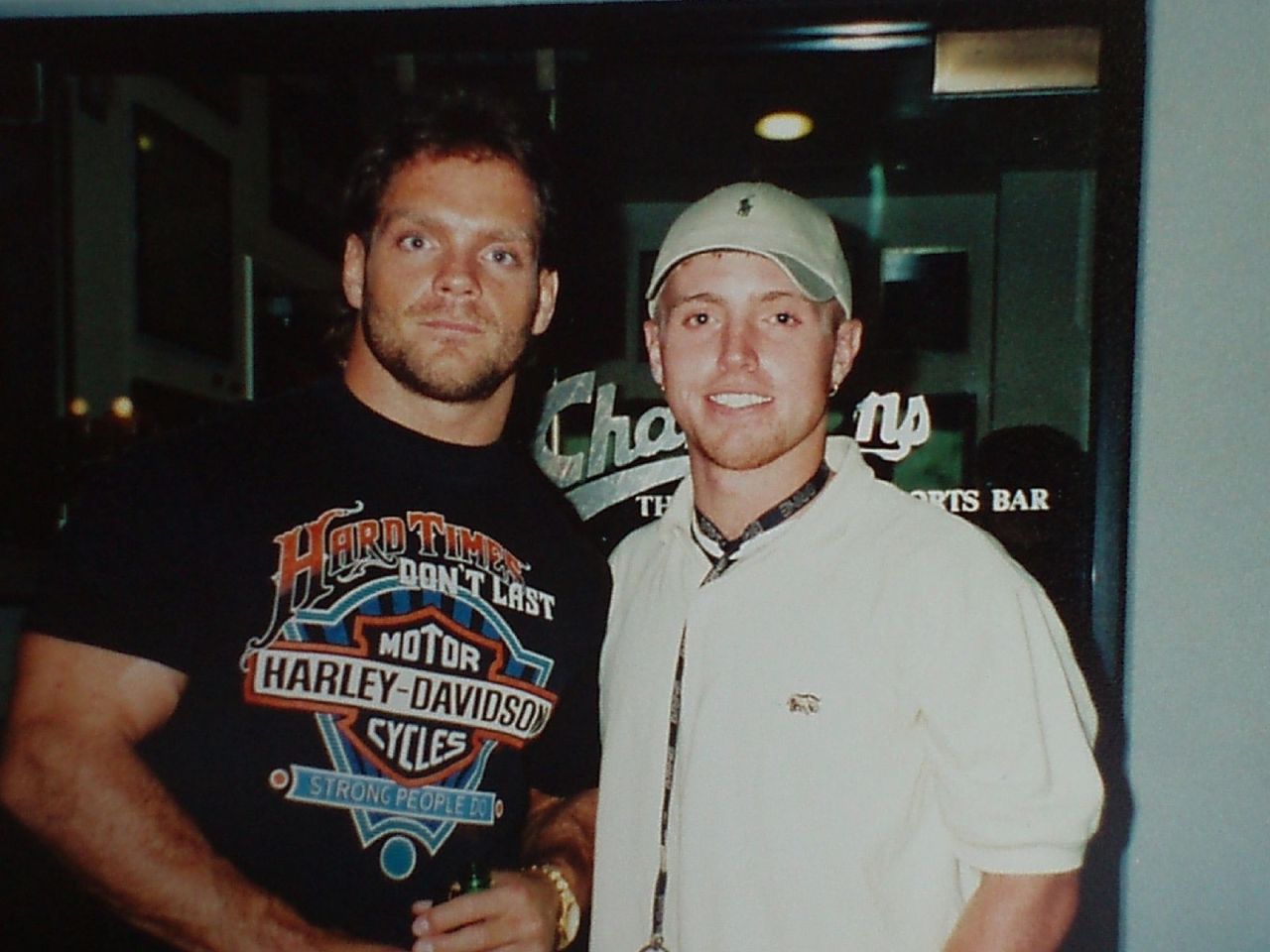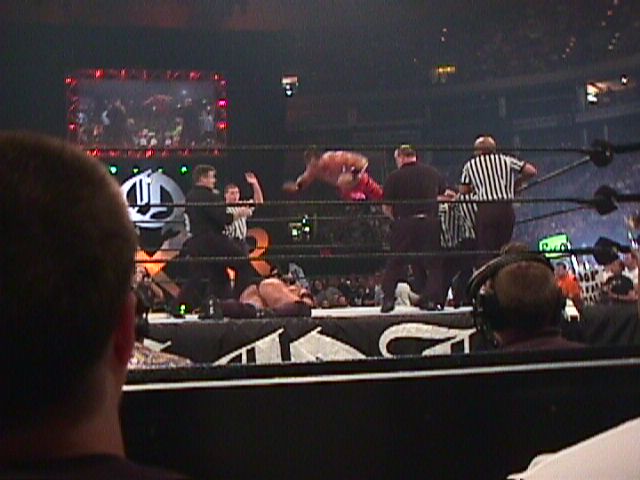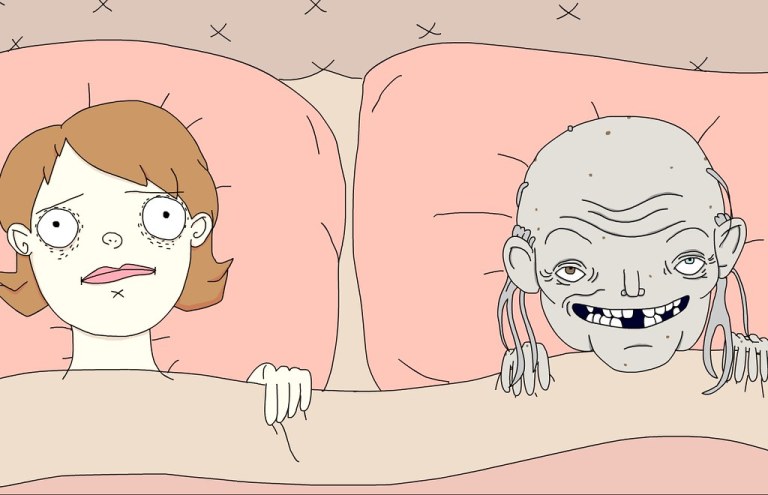
Was Chris Benoit The Guy We Thought He Was, Or A Violent Family Murderer?
"Benoit's brain was so severely damaged it resembled the brain of an 85-year-old Alzheimer's patient."
Chris Benoit was a 40-year-old world-class professional wrestler who won multiple championships including in the NJPW and WCW. He won 15 championships in the WWF/WWE alone. He was considered one of the greatest professional wrestlers of all time.
At the end of June 2007, Benoit missed some performances because he said his wife and son had food poisoning and were vomiting blood. He then missed a pay-per-view match due to what was characterized as a family emergency. The world would soon learn that the Benoit family was dead.
On June 25, 2007 three bodies were discovered at the Benoit home in Fayetteville, Georgia: Chris Benoit, his wife Nancy Benoit, and his 7-year-old son Daniel. It was determined that the family had been killed in a three day long murder-suicide perpetrated by Chris. Nancy Benoit was bound. Daniel Benoit was dosed with Xanax and believed to be unconscious at the time he was strangled to death. Chris Benoit placed Bibles next to his family member’s bodies, sent text messages to friends saying he had left the dogs in the enclosed pool area and left a side door open, and then died by hanging from one of his exercise machines. Chris had an older son and daughter that were living in Canada at the time and were unharmed.
The world was shocked by news of the murder-suicide. News stories were littered with quotes from people who knew Chris professionally and socially who said things like “I don’t know what happened, I just honestly couldn’t tell you what happened. Chris was one of the kindest, politest people. I never saw the guy get mad, not one single time. He didn’t get upset about anything.” His father described Chris as a “kind and gentle” man who loved working with children through Make-A-Wish. While this is something that is claimed about abusers and murderers all the time (think about the stereotype of the murderer whose neighbors say he was a nice guy, or the narcissistic abuser who appears charming and upstanding in his public life), tests done on Benoit’s body posthumously did show a significant amount of brain damage. The controversy surrounding the Benoit family deaths is based around the question of whether Chris Benoit was a bad guy in secret or whether his workplace injuries altered his behavior in a substantial way.
Roid Rage

At first, people’s knee-jerk reaction was to blame Chris’ previous anabolic steroid use for the murder-suicide, the stereotype of “roid rage” being rooted in sometimes observed symptoms of increased aggression in anabolic steroid users. However, it is unknown whether he was using anabolic steroids at the time and roid rage has been ruled out as an explanation for the family’s deaths. Chris and Nancy both had Xanax and an opioid painkiller in their systems, possibly at therapeutic levels (unlike Daniel who is believed to have been sedated into unconsciousness prior to his death). There were also opened wine bottles around the home. Chris Benoit visited his personal physician, Dr. Phil Astin, the day before the murders started. Dr. Astin was previously charged by federal authorities in two unrelated cases of improperly prescribing drugs to patients.
While roid rage was ruled out as a contributing factor in this crime, the investigation did reveal that Chris Benoit and other wrestlers had broken the terms of the WWE’s “Talent Wellness Program” which prohibits athletes from taking recreational drugs or anabolic steroids. The program has also been successfully used to aid in early detection of cardiac health issues for wrestlers.
CTE
Chris Benoit’s surviving son, David, spoke recently about the tragedy saying, “He would never do that, I know he wouldn’t. I think something terribly went wrong. The doctor said he had CTE. That’s what, at the beginning, gave me some closure. It just made my life a little easier, didn’t have to think about it. He had CTE. I don’t think it was him.”
Benoit was known for his aggressive wrestling style amassing “more concussions than he could count.” A hallmark of his career was a “diving headbutt” where Benoit would jump from the top rope and hit an opponent on the mat with his head.
Research done by the Sports Legacy Institute revealed that Benoit had did have chronic traumatic encephalopathy (CTE) as a result of his athletic career. Posthumous tests performed on his body determined that, “Benoit’s brain was so severely damaged it resembled the brain of an 85-year-old Alzheimer’s patient.” CTE is a serious brain disease that can cause memory loss, trouble thinking clearly, mood swings, dizziness, trouble speaking, trouble with balance, dementia and suicide. CTE is common in any group of people who experience head injuries (boxers, people who have served in the military, domestic violence victims) including 99% of the NFL. While symptoms of CTE appear 8-10 years after the brain injury, there is currently no way to diagnose the disease until the patient is dead.
Along with family annihilation, suicide is a common means of premature death for athletes who are posthumously diagnosed with CTE. (It is likely that this applies to the general population of people who have suffered repeat concussions, but generally only athletes are tested for CTE).
A few other men who have committed violence against themselves or others who have had or are suspected of having CTE:
- O.J. Simpson who is (infamously) suspected of murdering his ex-wife and another man is believed to have CTE. The doctor who first identified the disease said, “I would bet my medical license on it.”
- Washington State quarterback Tyler Hilinski who died by suicide at only 21-years of age, was confirmed to have CTE.
- New England Patriots tight end Aaron Hernandez murdered the man dating his girlfriend’s sister and possibly two other people before dying by suicide. Researchers studying his brain said he had “the most severe case of chronic traumatic encephalopathy (CTE) ever discovered in a person his age.”
- Chicago Bears safety Dave Duerson asked that his brain be left to science before he died by suicide, he was then confirmed to have CTE.
- Kansas City Chiefs linebacker Jovan Belcher murdered his girlfriend while she was with their infant child and then died by suicide. The child survived. CTE was found in his brain.
- Kellen Winslow Jr. played in the NFL for almost 10 years before being charged with multiple counts of rape, kidnapping, and sexual battery. His defense attorney argued that CTE caused Winslow to commit the crimes and he was actually given a sentence almost as low as his attorney’s offer (14 years to the suggested 12 years).
- Junior Seau played almost two decades in the NFL before shooting himself in the heart. He was confirmed to have CTE after his death.
- Phillip Adams was an NFL cornerback who killed 6 people and then died by suicide during a police standoff. He was not able to be tested for CTE, though his father believes football “messed him up”.
- Dave Mirra was a pro-BMX biker who died by suicide and was the first adventure sports athlete diagnosed with CTE, though he was also an amateur boxer (the sport of boxing carries the highest risk of CTE).
Rather than use the Benoit family’s deaths as a learning moment, the WWE scrubbed the existence of Chris Benoit off of their website and simply stopped mentioning him at all. In November 2017, 55 professional wrestlers filed a lawsuit against the WWE for CTE-related workplace injuries they’d received while performing for the organization. The lawsuit was dismissed by the United States Court of Appeals for the Second Circuit in 2020.
Abuse/familicide
One of the truest statements about intimate partner and family violence comes, morbidly, from the 1996 slasher movie Scream in which Randy the horror movie expert says of a potential suspect, “there’s always some stupid bullshit reason to kill your girlfriend.” True crime shows like Forensic Files and Dateline have endless episodes about a husband or wife who murdered their partner. No matter how happy they appeared on the outside, time and time again we’ve seen cases where there was a motive hidden in the murderer’s private life. For example, in the recently highly publicized case of Gabby Petito, she was murdered by her fiance only two months into what looked like an idyllic cross-country road trip on social media. Just because the Benoit family appeared happy to outsiders doesn’t mean that is what it was actually like for Nancy and Daniel on the inside.
It should also be said that if CTE causes people to become violent and we know that, for instance, 20% of high school football players and 99% of the NFL have CTE, it seems like we have a duty to warn people away from relationships with those who have played these sports or have suffered head injuries in the past. Not because those men don’t deserve love and community, but because they are not safe to be around as we still struggle to view abuse as a public health problem rather than a private relationship or family issue that individual women and children are responsible for protecting themselves from. If someone finds themselves in a relationship with an athlete or veteran with a history of concussions, what resources are available to her to ensure that she and her children will be safe as he ages and the symptoms of CTE worsen? Will people listen to her if she shares that her once healthy relationship is now abusive? Is there a way she can alert authorities or health professionals that will actually result in safety and dignity for everyone involved? That isn’t something that currently exists. We have to build it.
After marrying in 2000, Nancy Benoit filed for divorce in 2003 saying that Chris treated her cruelly and had explosive anger that sometimes resulted in his throwing furniture around their home. She also filed for a restraining order which she dropped three months later. After their deaths, police found text messages between the two that said Nancy was having difficulty living with Chris’ “roid rage”.
Perhaps the simple explanation is that causes and motives of violent acts are always as complex as it appears in the Chris Benoit case but because we don’t have a two-decade plus relationship (if even just through TV and social media) with the perpetrator, we have no interest in empathizing with them or understanding the factors that lead to violence and tragedy.











